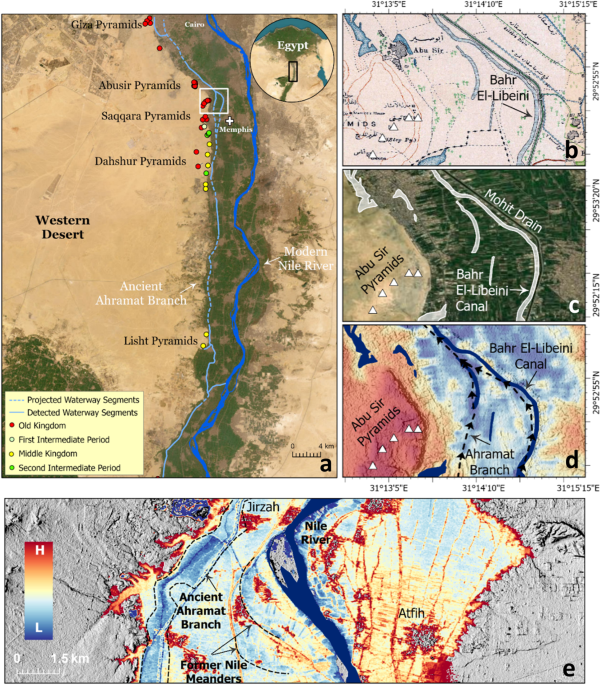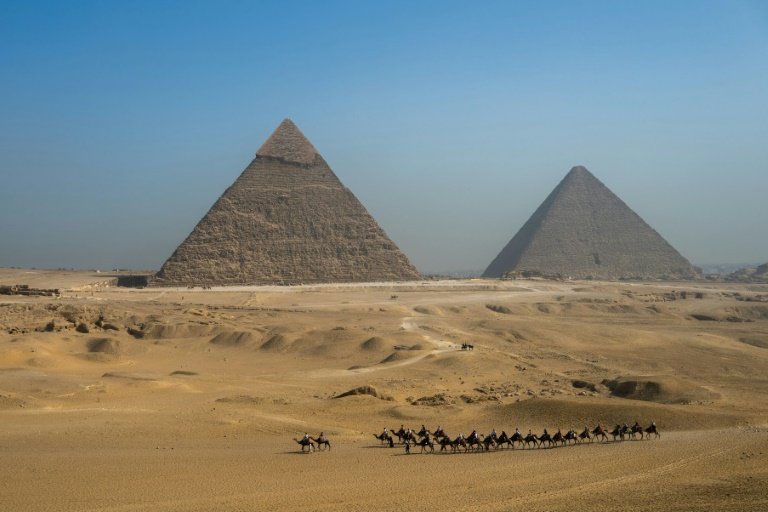Scientists have unearthed a long-buried branch of the Nile River, shedding light on the mystery of how ancient Egyptians transported massive stone blocks to construct the renowned pyramids. This 40-mile-long river branch, concealed beneath desert and farmland for thousands of years, once flowed alongside more than 30 pyramids in Egypt, including those at the iconic Giza pyramid complex.

Mapping the Ancient Watercourse
Using radar satellite imagery, an international team of researchers mapped the river branch, named Ahramat, meaning “pyramids” in Arabic. Radar technology enabled them to penetrate the sand surface, revealing buried rivers and ancient structures. Field surveys and sediment cores confirmed the presence of the river, indicating its significant role in ancient transportation and construction activities.
The River’s Influence on Pyramid Construction
The proximity of the river to the pyramids suggests that it played a crucial role in transporting materials and workers for construction. The ceremonially raised walkways alongside the river, leading to Valley Temples acting as harbors, underscore the river’s importance in facilitating construction logistics. Floating heavy materials down the river from the south would have been far more efficient than overland transport. The discovery offers insights into the geographical, climatic, and environmental factors shaping ancient human behavior. Changes in the river’s course and volume over time influenced the location and construction methods of the pyramids. Understanding these dynamics enriches our understanding of ancient Egyptian civilization and its interactions with its natural surroundings.
Restoration Projects and Controversy
Recent archaeological endeavors, including the restoration of Giza’s smallest pyramid, aim to restore these ancient wonders to their former glory. However, controversies arise, with concerns raised by some archaeologists about the thorough study of relocated granite blocks. Preservation efforts must balance restoration goals with meticulous research to maintain historical integrity.

Technological Advancements in Pyramid Exploration
Cutting-edge technologies, such as space-based radiation imaging, are revolutionizing our understanding of pyramid interiors. These innovations provide unprecedented insights into hidden corridors and structures within the pyramids, offering glimpses into ancient architectural marvels. The ongoing exploration of Egypt’s pyramids promises to unveil further mysteries and deepen our appreciation of one of the world’s most enigmatic civilizations.
